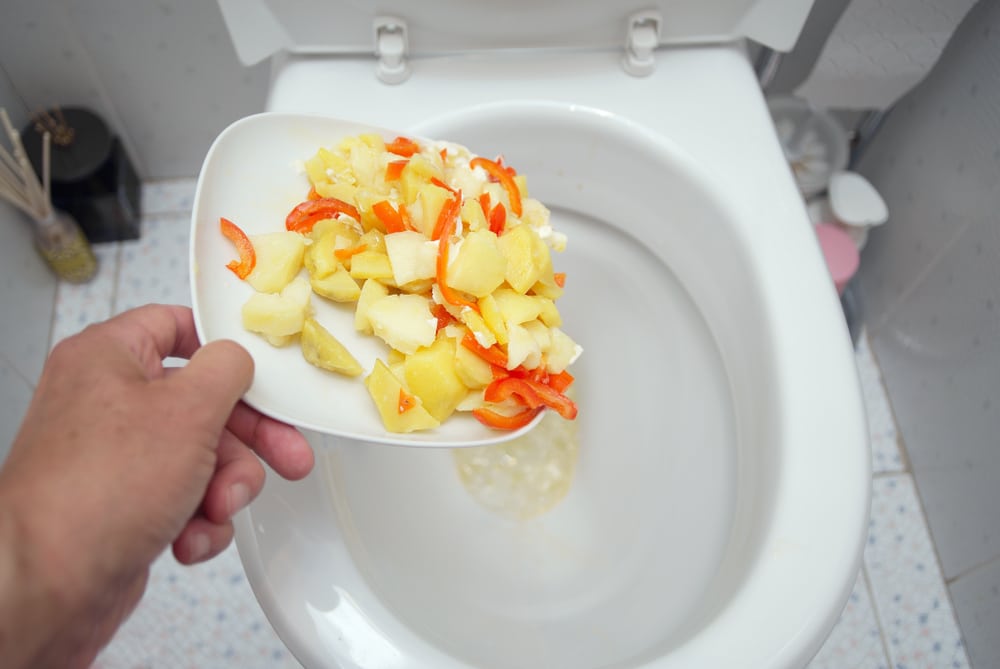Is it Safe to Dispose of Food in the Toilet?
Is it Safe to Dispose of Food in the Toilet?
Blog Article
The content below involving Flushing Food Down the Toilet? is absolutely engaging. You should give it a look.

Intro
Many people are frequently faced with the predicament of what to do with food waste, specifically when it comes to leftovers or scraps. One usual question that arises is whether it's fine to flush food down the bathroom. In this post, we'll delve into the reasons individuals might think about flushing food, the effects of doing so, and different methods for correct disposal.
Reasons why people might take into consideration purging food
Absence of recognition
Some individuals might not understand the potential injury brought on by flushing food down the commode. They may wrongly think that it's a safe technique.
Convenience
Purging food down the toilet might feel like a fast and simple option to throwing away unwanted scraps, especially when there's no close-by trash can available.
Idleness
In some cases, individuals may merely pick to flush food out of large idleness, without considering the effects of their actions.
Consequences of flushing food down the commode
Ecological effect
Food waste that winds up in waterways can contribute to air pollution and damage water ecosystems. Furthermore, the water made use of to flush food can stress water resources.
Pipes problems
Purging food can cause stopped up pipelines and drains, causing costly pipes repair services and aggravations.
Sorts of food that must not be purged
Fibrous foods
Foods with fibrous structures such as celery or corn husks can obtain tangled in pipelines and create blockages.
Starchy foods
Starchy foods like pasta and rice can take in water and swell, leading to blockages in pipes.
Oils and fats
Greasy foods like bacon or cooking oils ought to never ever be flushed down the commode as they can strengthen and trigger clogs.
Correct disposal methods for food waste
Using a garbage disposal
For homes furnished with waste disposal unit, food scraps can be ground up and purged with the pipes system. Nevertheless, not all foods are suitable for disposal in this manner.
Recycling
Certain food packaging products can be recycled, minimizing waste and reducing environmental impact.
Composting
Composting is an environmentally friendly means to take care of food waste. Organic materials can be composted and made use of to enhance dirt for gardening.
The significance of proper waste administration
Minimizing ecological injury
Proper waste monitoring practices, such as composting and recycling, aid reduce air pollution and protect natural deposits for future generations.
Shielding plumbing systems
By preventing the practice of flushing food down the commode, home owners can avoid costly pipes fixings and preserve the honesty of their pipes systems.
Verdict
In conclusion, while it may be tempting to purge food down the toilet for convenience, it is necessary to understand the possible repercussions of this action. By taking on proper waste monitoring techniques and disposing of food waste responsibly, individuals can contribute to much healthier plumbing systems and a cleaner environment for all.
FLUSH FOOD DOWN THE TOILET?
FLUSHING FOOD CAN CAUSE BLOCKED DRAINS IN YOUR HOME
All of the plumbing fixtures in your home are connected to the same sewer pipe outside of your home. This outdoor sewer pipe is responsible for transporting all the wastewater from your home to the Council sewer mains. Even small pieces of food that go down the kitchen sink can cause problems for your sewer. It should therefore be obvious that flushing larger bits of food, such as meat, risks a clog in either the toilet itself or the sewer pipes. Flushing greasy food is even more problematic because oil coagulates when it cools, coating the interior lining of your pipes.
THE TOILET IS NOT A BIN
Food isn’t the only thing that people shouldn’t be flushing down the toilet. People use the toilet to dispose of all kinds of things such as tampons, makeup wipes, dental floss, kitty litter and even underwear. Water goes to great lengths to educate residents about the high costs and stress placed on wastewater treatment systems simply from people flushing the wrong stuff down the toilet. It costs taxpayers millions of dollars each year, and homeowners thousands in blocked drain repairs.
FLUSHING FOOD IS A WASTE OF WATER
Flushing food is a waste of our most precious resource - water. In June this year Level 1 water restrictions were introduced to protect water supply from drought conditions. Much of New South Wales continues to be affected by prolonged drought with recent figures revealing up to 97 per cent of the state remains in drought. Depending on whether you have a single or dual flush toilet, every single flush uses between five and 11 litres of water. In the current climate this is a huge amount of water to be wasting on flushing food that should be placed in the bin (or better yet, the compost).
https://www.jabplumbingsolutions.com.au/blog/can-you-flush-food-down-the-toilet

As a fervent person who reads on Is it safe to flush food (especially rice) down the toilet?, I assumed sharing that piece of content was a good idea. Do you know somebody else who is excited by the topic? Why not share it. I praise you for being here. Revisit us soon.
Call Today Report this page